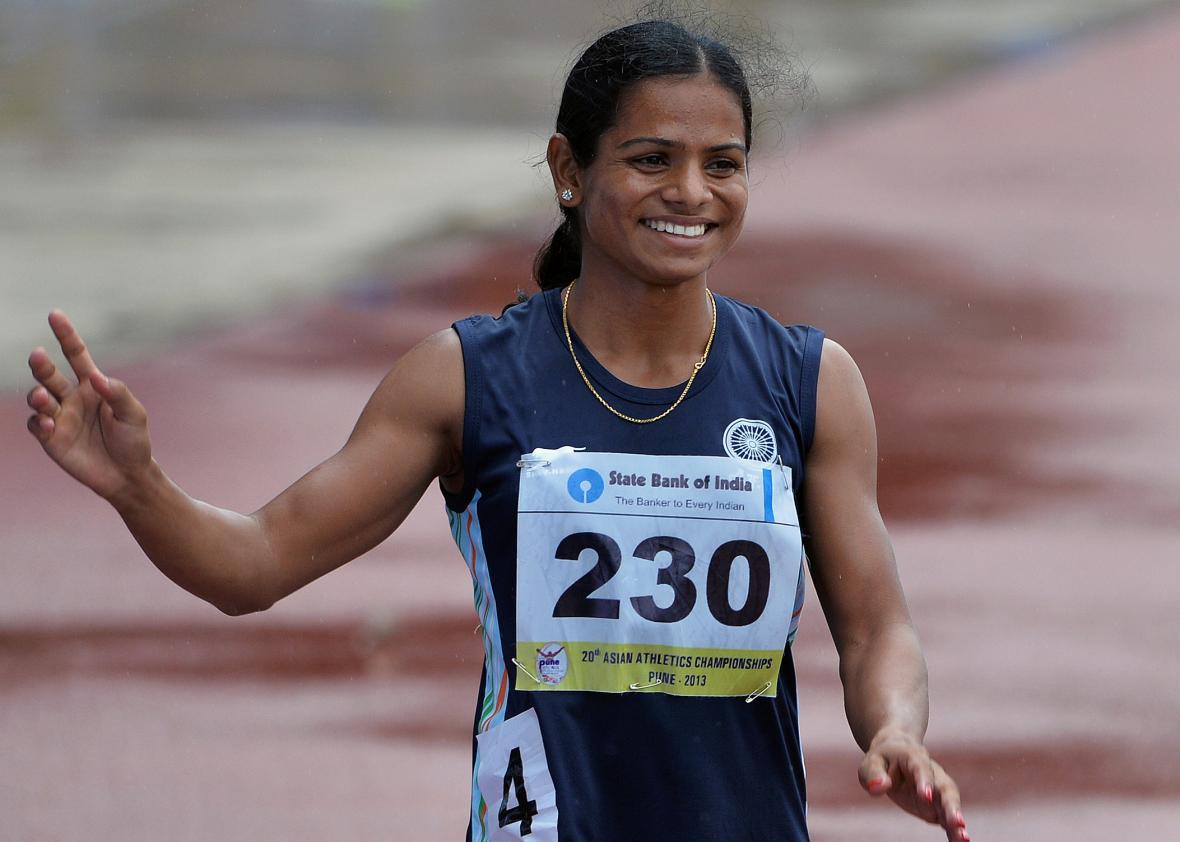Transgender athletes will face fewer barriers to participating in the Olympic Games, thanks to new guidelines first leaked late last week on Outsports and confirmed by the International Olympic Committee on Sunday. The recommendations will now allow athletes who transition from female to male to take part in men’s competitions “without restriction,” while trans women’s eligibility will depend on their testosterone levels. According to Out, trans women must now “prove that their testosterone has been below 10 nanomols per liter for at least a year prior to competition.” Under earlier IOC guidelines, anyone who transitioned from male to female was ineligible to take part in international competition until they had undergone gender-reassignment surgery, followed by two years of hormone therapy.
An IOC medical official told the Associated Press that in addition to reflecting scientific consensus, the policy change was driven by social and political developments. Arne Ljundqvist, a member of the team that drafted the recommendation, said, “It has become much more of a social issue than in the past. … We felt we cannot impose a surgery if that is no longer a legal requirement.”
Although the new guidelines provide welcome clarity for transgender athletes—triathlete Chris Mosier, the first out transgender athlete to make a U.S. national team, who qualified for the World Duathlon Championships but wasn’t sure he’d be allowed to compete under the previous rules, now has a green light—resolution was more elusive for cisgender women with high levels of testosterone, a condition known as hyperandrogenism.
Hyperandrogenism has been in the news since 2009, when South African middle-distance runner Caster Semenya was subjected to gender-verification testing at the track and field World Championships, where she won gold in the 800 meters. Then in 2014, Indian sprinter Dutee Chand was disqualified shortly before the start of the Commonwealth Games because of excessive levels of testosterone in her blood.
Chand was suspended by the International Association of Athletics Federations, track and field’s governing body, in 2014, because of her hyperandrogenism. Then, last year the Court of Arbitration for Sport said the IAAF hadn’t proved that women with high testosterone had a competitive edge, suspended the rule in question, and reinstated Chand’s eligibility. The new IOC statement encourages the IAAF to make a case for the reinstatement of its rule, adding, “To avoid discrimination, if not eligible for female competition, the athlete should be eligible to compete in male competition”
But as Marc Naimark wrote in Slate shortly after Chand’s disqualification, for more than 90 years, sports governing bodies have been fighting “a losing war against an imaginary foe: the presence of male interlopers in women’s competitions. The casualties of this war are the women who are subjected to humiliating screening and testing, a minority of whom will be designated by sports authorities as not ‘real’ women, or at best, women ineligible to compete as women.” Absent any evidence that high testosterone levels provide women with an unfair advantage or that men are trying to pass as women in order to compete in women’s events, it isn’t clear why sports bodies need to subject athletes to demeaning and unnecessary tests.
